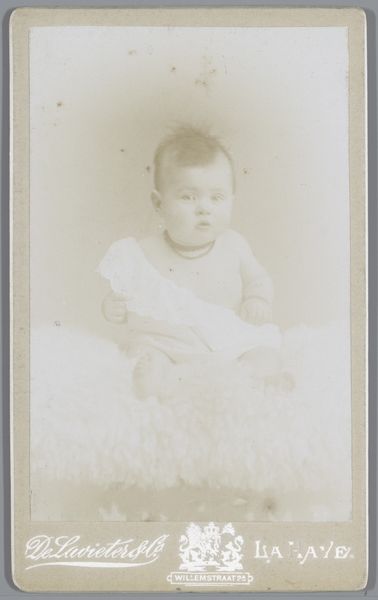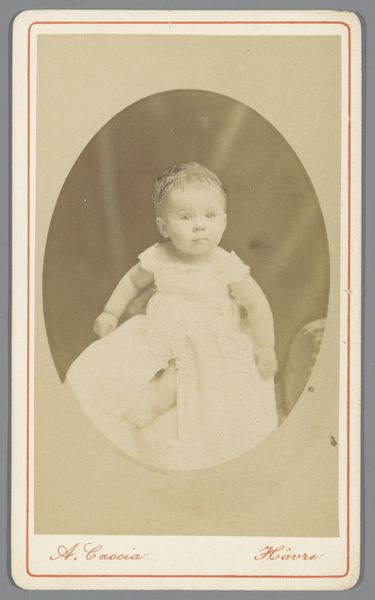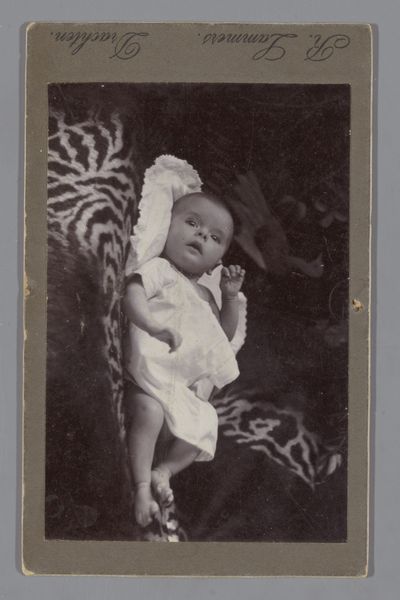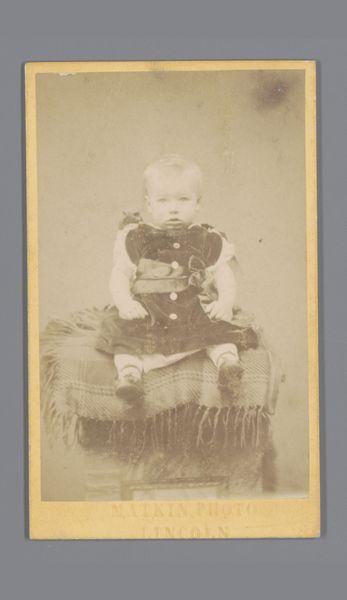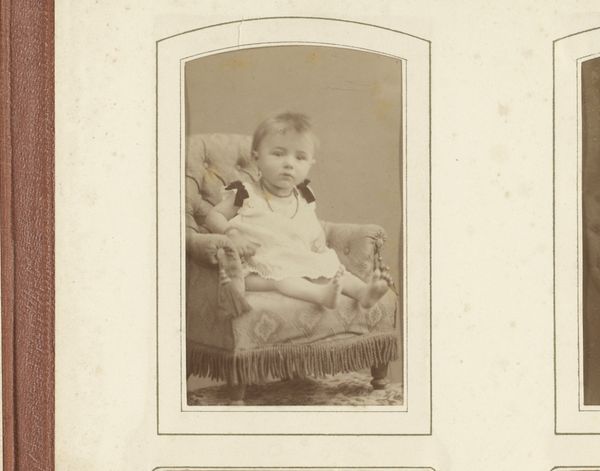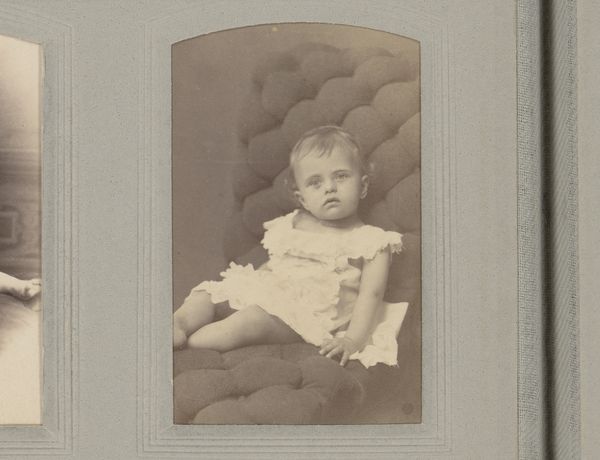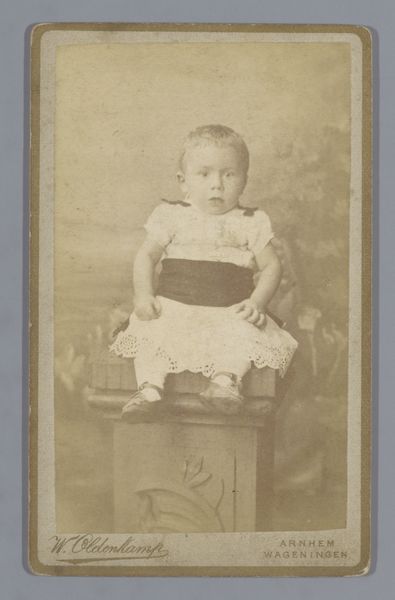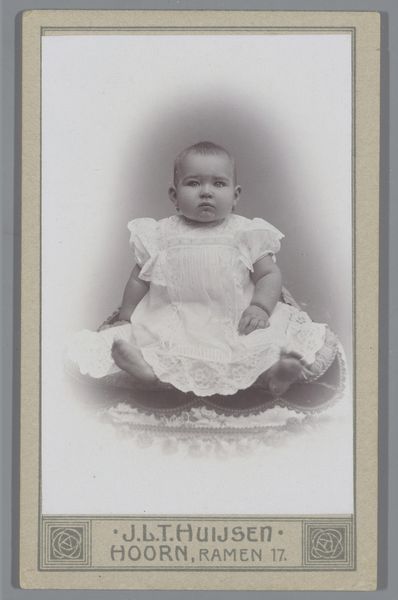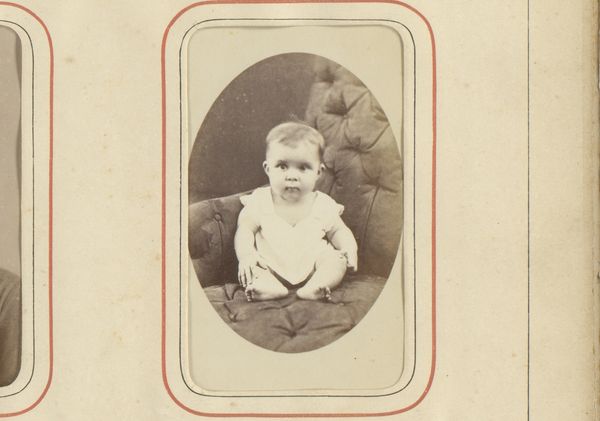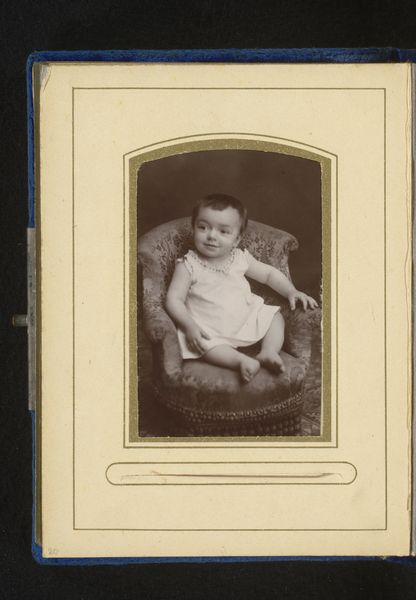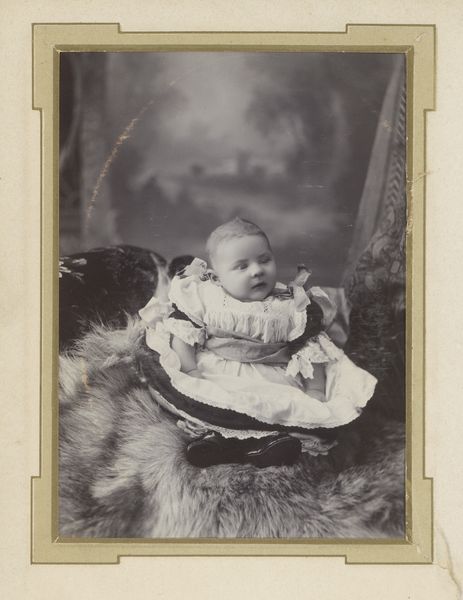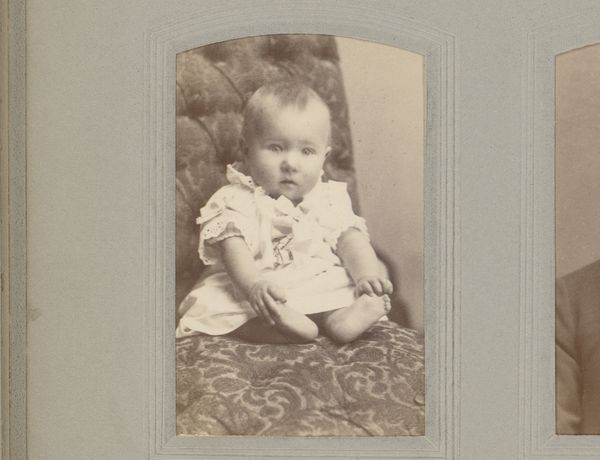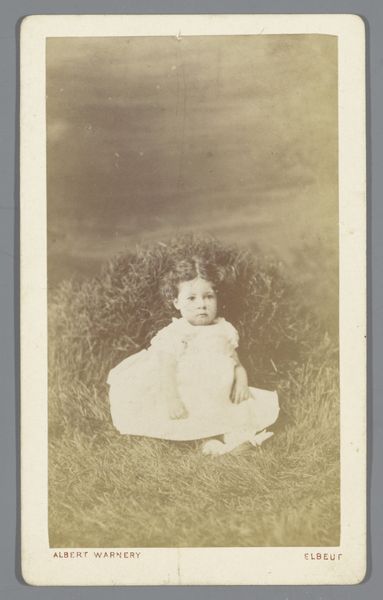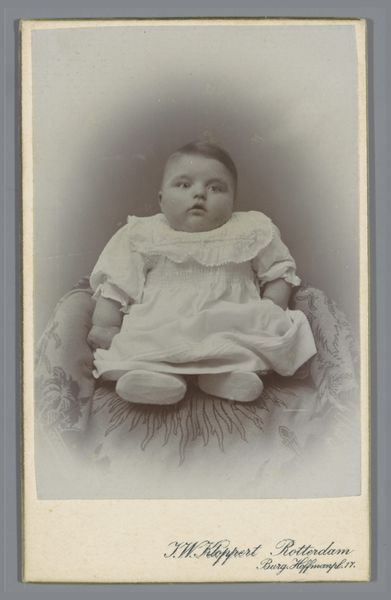
paper, photography, gelatin-silver-print
#
portrait
#
light coloured
#
paper
#
photography
#
gelatin-silver-print
#
realism
Dimensions: height 105 mm, width 65 mm
Copyright: Rijks Museum: Open Domain
Editor: Here we have "Portret van Tania Manzoni," a gelatin silver print from between 1905 and 1914. I find the oval frame and soft focus quite striking, creating this dreamy, almost ethereal quality around the child. What aspects of its composition stand out to you? Curator: Indeed, the choice of the gelatin silver print process lends a unique textural quality. Notice how the monochrome palette isn’t simply grey, but rather a subtle range of light and shadow. This delicate tonal gradation is essential. How does the composition play with these light variations? Editor: Well, the light seems to highlight the child's face, drawing your attention immediately. It's interesting how the textured fur beneath creates a sense of depth but doesn't compete with the subject. Curator: Precisely. The photographer expertly utilizes light and shadow to define the child's form, creating a focal point within the oval frame. Consider also the materiality; the paper itself, the silver emulsion. Do the subtle imperfections in the print add to the image's inherent aesthetic value, or do they detract? Editor: I think they add character. It gives the sense of history. Are you drawn to any particular geometric forms within the photograph's structure? Curator: The interplay of ovals is particularly compelling— the primary oval containing the image itself, and then the softer oval suggested by the arrangement of light around the subject. Furthermore, one might deconstruct the child's pose— the lines of the arms mirroring the curve of the shoulders. But what does that semiotic arrangement imply? Editor: It's all very cleverly constructed, but quite simple. It's almost meditative. It never occurred to me to see photography with such emphasis on form! Curator: By analyzing the intrinsic visual elements, we uncover the formal beauty. Photography offers us more than simple representation; it provides aesthetic structures that reveal our visual biases.
Comments
No comments
Be the first to comment and join the conversation on the ultimate creative platform.
